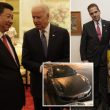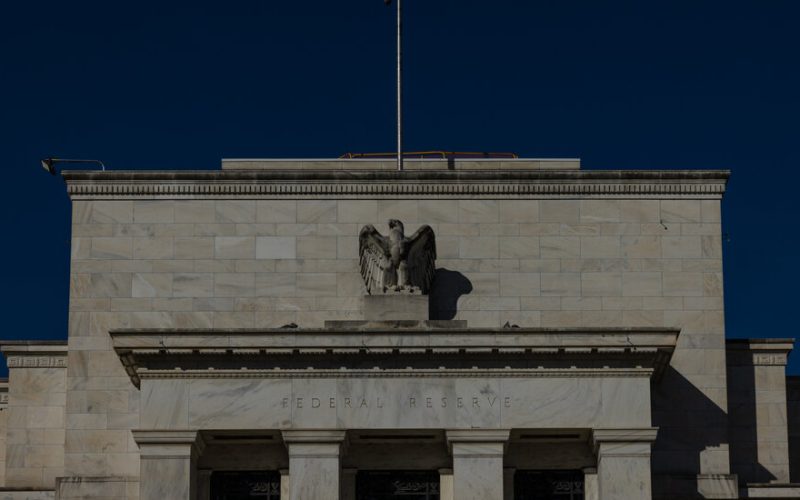Federal Reserve officials cut interest rates as expected last month. But minutes from their December meeting suggest that the decision was a close call — and that there is no guarantee policymakers will lower rates again anytime soon.
The minutes of the central bank’s Dec. 17-18 meeting, released on Wednesday, showed that most Fed officials still expected to cut rates eventually. But they also showed that policymakers were concerned about signs that their fight against inflation was losing momentum, and they were no longer certain that interest rates were doing much to slow the economy down. That makes a rate cut at the central bank’s next meeting, at the end of the month, unlikely, Fed-watchers say.
“Almost all participants judged that upside risks to the inflation outlook had increased,” the minutes said. Policymakers believe they are “at or near the point at which it would be appropriate to slow the pace” of rate cuts.
Fed officials are also dealing with a new wrinkle: President-elect Donald J. Trump has promised to make sweeping changes to nearly every aspect of U.S. economic policy when he takes office this month. Some forecasters have argued that his proposals — particularly those around trade and immigration — could lead to faster inflation and slower growth.
Jerome H. Powell, the Fed chair, has said that policymakers will wait to see what Mr. Trump actually does before deciding how to respond. But the minutes from the December meeting show that some policymakers are already factoring Mr. Trump’s proposals into their outlook. Officials cited “potential changes in trade and immigration policy” as one factor suggesting that inflation could take longer to cool than previously expected.
Still, not all officials are expecting a big impact from Mr. Trump’s policies.
“If, as I expect, tariffs do not have a significant or persistent effect on inflation, they are unlikely to affect my view of appropriate monetary policy,” Christopher J. Waller, a Fed governor, said in a speech in Paris on Wednesday.
Even before factoring in Mr. Trump’s policies, however, the Fed was set to end 2024 in a delicate position.
Policymakers raised rates to their highest level in decades in 2023, then kept them at that level for more than a year in an effort to slow down the economy and bring inflation under control. It worked: Inflation cooled substantially, and by last fall, policymakers concluded they had made enough progress that they could gradually begin easing off the brakes. The Fed cut interest rates by half a percentage point in September, and by another quarter point in November.
But progress on inflation stalled late last year. That, combined with continued strong consumer spending and economic growth, led some economists to argue that the Fed should hold off on cutting rates in December.
Others, however, argued that interest rates were still high enough to exert downward pressure on economic growth at a time when the labor market, though still strong, was beginning to show cracks. Cutting rates, according to this view, was not so much an effort to speed up the economy as to prevent it from slowing further.
That view won out — officials decided to cut rates by another quarter percentage point at their December meeting. But the minutes suggest it was not an easy call: “A majority of participants noted that their judgments about this meeting’s appropriate policy action had been finely balanced.”
The decision was not unanimous: Beth Hammack, the president of the Federal Reserve Bank of Cleveland, voted against the rate cut. And a summary of members’ economic projections suggested that three nonvoting Fed officials would also have preferred to leave rates unchanged. The minutes showed these officials “suggested that the risk of persistently elevated inflation had increased in recent months.”
It could be a while before the Fed lowers rates again. The minutes showed that policymakers expected they “would likely slow the pace” of rate cuts after their December meeting, and that they believed interest rates were now “significantly closer” to a level where they were neither helping to speed up the economy nor helping to slow it down.
According to economic projections released after the meeting, officials expect to cut rates just twice in 2025 — down from four times in their earlier projections — and the minutes show that even those cuts are not guaranteed. The Fed is “well positioned to take time to assess the evolving outlook for economic activity and inflation,” the minutes note.
Investors are getting the message. They overwhelmingly expect the Fed to hold rates steady at its next meeting, at the end of this month, and they are divided on whether there will be any cuts before summer. Financial markets moved little in response to the minutes on Wednesday, suggesting that the account of the meeting was largely consistent with investors’ expectations for Fed policy.
Joe Rennison contributed reporting.








